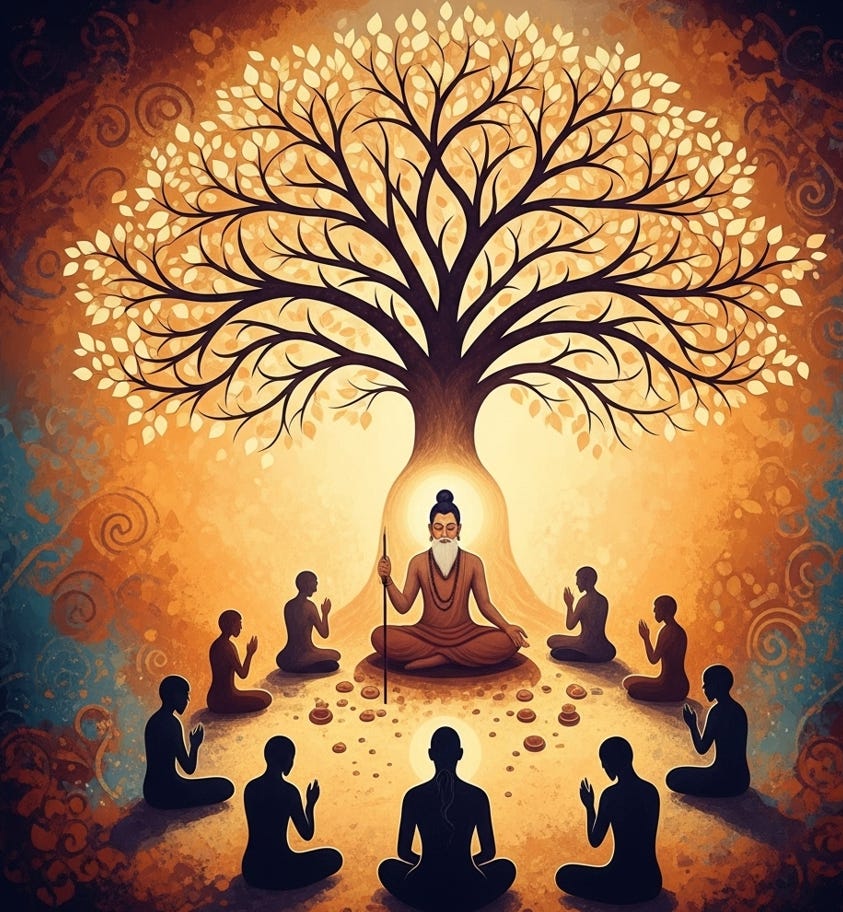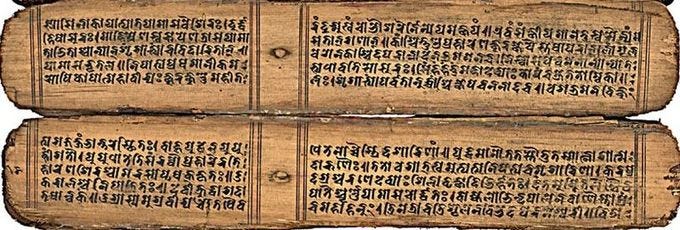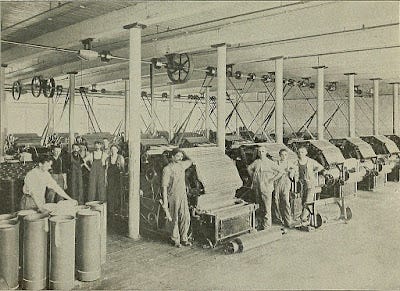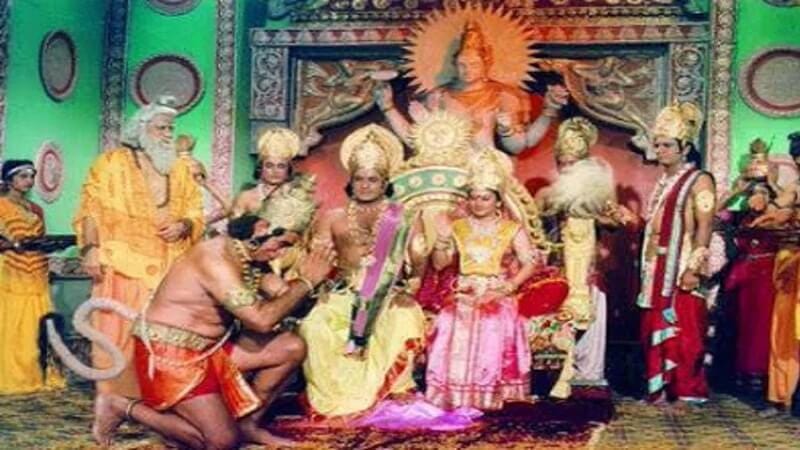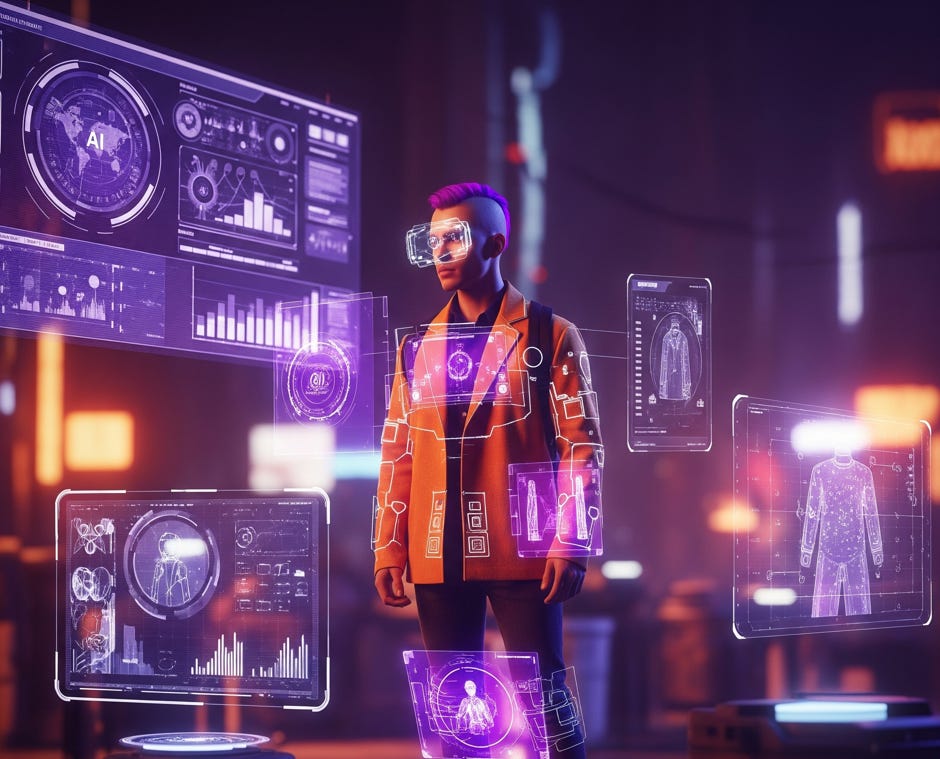Somewhere deep in the Indian subcontinent, tens of thousands of years ago, a hand met a cave wall. Fingers dipped in pigment traced the outline of a deer, not just to depict a hunt, but to remember it. Or maybe to teach it. Or warn others. The lines were crude, the tools primitive. But in that moment, a new kind of intelligence was born.
That wasn’t just art.
That was an interface.
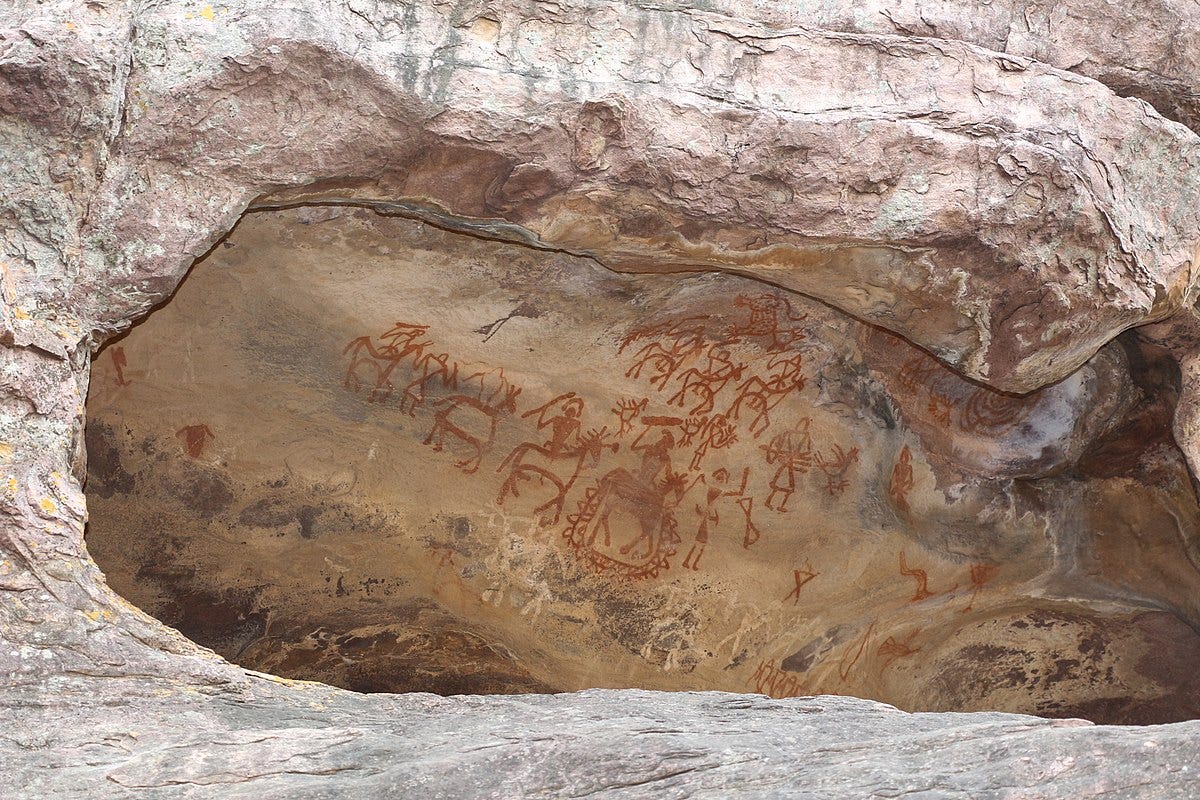
We often think of technology as tools. Hammers, wheels, processors. But what if the real revolution isn’t in the tool itself but in the medium it unlocks?
Every leap humanity has made, rituals, religion, republics, resistance, has followed one quiet transformation: how we transmit information. From pigments on stone to code on silicon, the medium didn’t just carry the message. It changed the message, the society, and the self.
Let’s take a walk through time. You’ll see what I mean.
When Memory Had No Backup
In the beginning, knowledge lived in people.
You didn’t learn to plant rice or navigate by stars by reading. You followed someone. Knowledge passed from muscle to muscle, breath to breath. Myth and memory were indistinguishable. Rituals were more than symbolic, they were functional tools for preserving the past and surviving the present.
India, with its rich oral traditions, excelled at this. The Rigveda was memorized and passed down over generations with such precision, it survived for centuries before ever being written down.
But oral systems had a flaw.
No storage. No scale.
If a village elder died without a successor, a lineage of knowledge vanished with them. Local, embodied, and rich in meaning but fragile.
So we built something more durable.
Scratching Memory Into Matter
Writing changed everything.
Some of the earliest Indian texts like the Upanishads and Sutras, were written on palm leaves, birch bark, and copper plates. In other parts of the world, people etched ideas onto clay or stone. But the impact was the same: knowledge detached from the knower.
Writing was more than a convenience. It turned ideas into infrastructure.
Religions spread across empires. Laws became standardized. Scholars across geographies could argue across centuries. And importantly, power centralized because reading and writing required access.
Scribes became servers. Libraries became the first cloud storage.
And for the first time, knowledge could outlive the body.
The Press That Pressured the World
Then came Gutenberg and everything moved faster.
In India, the printing press arrived in the 16th century via the Portuguese in Goa, but it wasn’t until the 19th and 20th centuries that it exploded. Think pamphlets during the Swadeshi movement. Poetry during Gandhi’s campaigns. Religious tracts and educational primers reaching villages for the first time.
Ideas went viral before “viral” was a word.
But speed came at a cost.
The printing press rewarded simplicity. Complex philosophies were trimmed into slogans. Movements had to package themselves. The world began to favour the quote over the context.
Still, this era democratized access. Books weren’t just for monks or kings. A farmer in Bengal could read the Ramayana on a cheap leaflet. A student in Delhi could learn about revolutions in France.
The message still mattered but the medium had started to reshape it.
Voices in the Ether
By the time India got its first radio broadcast in 1927, the game had changed again.
Radio and later television weren’t just channels of communication. They were makers of collective memory.
If you grew up in the 80s or 90s in India, you probably remember watching Doordarshan’s Ramayana. Families would gather. Streets would go quiet. It was more than a show, it was a shared ritual, beamed into millions of homes.
Radio brought political speeches, folk music, and cricket commentary into rural homes. TV gave us synchronized national narratives. But this era also introduced a new asymmetry: one voice, many ears. You could listen. You couldn’t talk back.
The medium brought reach, but flattened nuance.
The Internet Shatters the One-Way Mirror
Then came the biggest shift since the printing press.
The internet tore down geography. For the first time, everyone could speak, connect and engage. Blogs, social media, forums, YouTube. A poet in Lucknow and a coder in Chennai could reach global audiences instantly.
The impact was dizzying.
India saw the rise of regional content creators, digital activism, meme cultures, and WhatsApp universities. Movements like #MeToo India flourished but so did disinformation, polarization, and echo chambers.
We gained voice, but lost consensus.
Platforms began to shape what we saw. Algorithms, not editors, filtered reality. Attention, not accuracy, became the currency.
We had built infinite libraries. But the maps were/are missing.
Welcome to the Synthetic Layer
Today, we stand at the edge of a new interface, one not made of ink or pixels, but of perception itself.
With AI, AR, and phygital technologies, we’re entering an age where the medium responds, reconstructs, and even remixes reality in real time.
AI curates your newsfeed.
Augmented reality overlays data on your field of vision.
Smart cities use digital twins to control traffic, pollution, and even garbage collection.
We’ve moved from medium as message to medium as environment. The message doesn’t sit on the medium. It lives within it.
Reality has layers now. And those layers will soon be programmable.
So Where Do We Fit?
Here’s the thing: we’re more than just users of media. We are nodes in the network curating the medium and the message.
We don’t need to out-code AI. We need to out-context it.
In a world of infinite content and finite attention:
Be a curator, not just a consumer.
Design messages for interfaces, not just platforms.
Use technology to clarify, not confuse.
Because now, the message is not the only point.
The medium also is.
And if we don’t shape it with care, it will reshape us without asking.
What You Can Do Today
Think Big.
Understand the systems you’re part of. A WhatsApp message can shape a riot or a rescue. A tweet can trigger protest or paranoia. These are not just apps. They are architectures of thought.
Act Small.
Choose your tools with intention. Teach people how algorithms work. Help someone trace the origins of an image or idea. Build slower, clearer systems.
Channel the medium
Curate carefully to guide perception. Use visuals to anchor meaning. When sharing, add context. When consuming, ask: who benefits if I believe this?
The mediums have always been mirrors.
Let’s make sure we like what we see.



